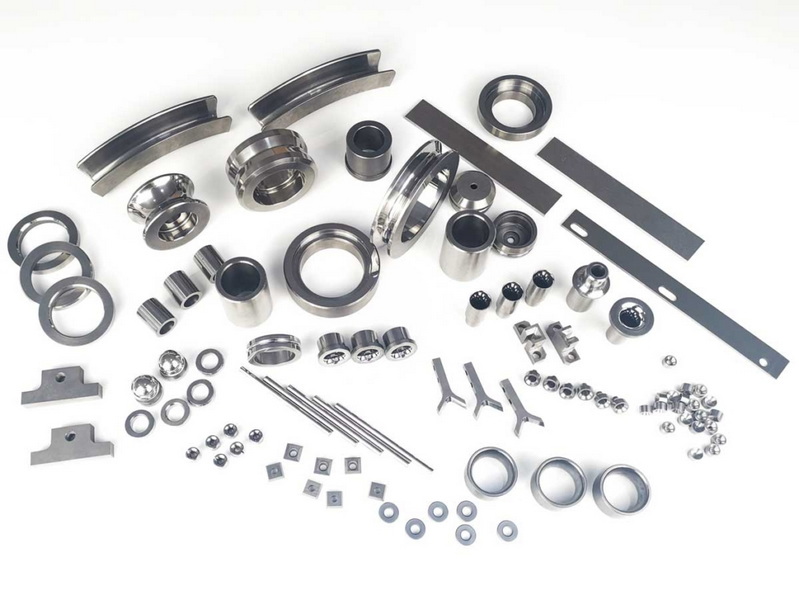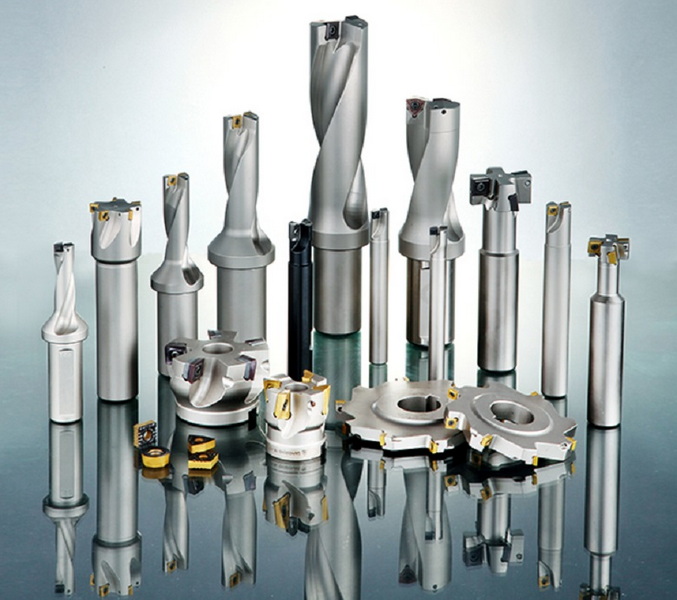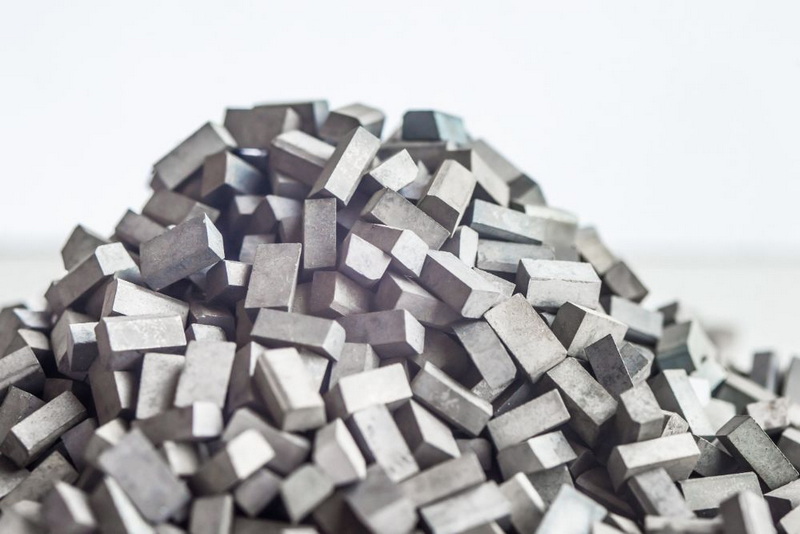Content Menu
● Understanding Tungsten Carbide
>> Properties of Tungsten Carbide
● Does Tungsten Carbide Rust?
● Applications of Tungsten Carbide
>> Additional Applications
● Corrosion Resistance of Tungsten Carbide
● Maintenance and Care for Tungsten Carbide
>> Cleaning Steps
● Expanded Discussion on Properties
>> Impact Toughness
● Comparison with Other Materials
● Industry Trends
● Conclusion
● FAQs
>> 1. How long does it take for tungsten carbide to rust?
>> 2. Can I wear my tungsten carbide ring in water?
>> 3. Does exposure to saltwater affect tungsten carbide?
>> 4. Is all tungsten carbide rustproof?
>> 5. How do I care for my tungsten carbide jewelry?
● Citations:
Tungsten carbide is a remarkable material known for its exceptional hardness and durability. It is widely used in various applications, from industrial tools to jewelry. However, a common question arises: Does tungsten carbide rust? This article will explore the properties of tungsten carbide, its resistance to rust and corrosion, and provide insights into its applications.

Understanding Tungsten Carbide
Tungsten carbide (WC) is a compound made from equal parts of tungsten and carbon atoms. It is renowned for its high density, hardness, and resistance to wear. Tungsten carbide is approximately three times as stiff as steel and can withstand extreme temperatures. The material's hardness ranks between 9 and 9.5 on the Mohs scale, making it one of the hardest materials available.
Properties of Tungsten Carbide
- High Hardness: Tungsten carbide is known for its incredible hardness, making it ideal for cutting tools and industrial applications.
- Wear Resistance: It exhibits excellent wear resistance, significantly outlasting other materials like steel.
- Corrosion Resistance: Tungsten carbide is generally resistant to corrosion, but this can vary depending on the composition of the alloy used.
Does Tungsten Carbide Rust?
Tungsten carbide itself does not rust in the traditional sense because it does not contain iron, which is the primary metal that rusts when exposed to moisture and oxygen. However, there are important distinctions to consider:
- Pure Tungsten vs. Alloys: Pure tungsten does not rust unless exposed to extreme temperatures (600–800 °C). When tungsten is alloyed with other metals, such as cobalt or nickel, the corrosion resistance can change. Cobalt-bonded tungsten carbide may be more susceptible to oxidation compared to nickel-bonded tungsten carbide.
- Environmental Factors: While tungsten carbide is resistant to rusting in most environments, exposure to harsh chemicals or extreme conditions can lead to surface degradation. For instance, acids can attack the cobalt binder in some tungsten carbide alloys, leading to corrosion.
Applications of Tungsten Carbide
Tungsten carbide's unique properties make it suitable for various applications:
- Industrial Tools: Used extensively in cutting tools, drill bits, and milling machines due to its hardness and wear resistance.
- Jewelry: Popular in wedding bands and fashion rings because of its scratch-resistant nature.
- Mining and Drilling: Employed in mining equipment due to its durability under high-stress conditions.
- Medical Instruments: Utilized in surgical tools because it maintains sharpness longer than other materials.
Additional Applications
- Construction: In construction, tungsten carbide is used for saw blades and drill bits that require exceptional durability against tough materials like concrete and asphalt.
- Aerospace Industry: Its strength-to-weight ratio makes tungsten carbide ideal for aerospace components that must endure high-stress environments without adding excessive weight.
- Electronics: Tungsten carbide's electrical conductivity allows it to be used in various electronic components, including light bulbs and electrical contacts.

Corrosion Resistance of Tungsten Carbide
The corrosion resistance of tungsten carbide depends significantly on its binder material:
- Cobalt-Bonded Tungsten Carbide: While cobalt enhances the mechanical properties of tungsten carbide, it can lead to corrosion issues in acidic environments. Cobalt-bonded grades are generally resistant at pH levels above 7 but can deteriorate rapidly below pH 5 due to cobalt leaching.
- Nickel-Bonded Tungsten Carbide: Nickel offers better corrosion resistance compared to cobalt. Nickel-bonded tungsten carbide performs well in acidic conditions down to pH 2 or 3, making it more suitable for applications exposed to corrosive environments.
Maintenance and Care for Tungsten Carbide
To ensure the longevity of tungsten carbide products, especially jewelry:
- Regular Cleaning: Clean your tungsten carbide items regularly using a mild soap solution. Avoid harsh chemicals that can damage the surface or degrade binders.
- Avoiding Harsh Environments: While tungsten carbide is durable, it's wise to remove rings or tools when working with strong chemicals or during activities that may expose them to extreme conditions.
Cleaning Steps
1. Mix warm water with a few drops of mild dish soap.
2. Soak the item for a few minutes.
3. Gently scrub with a soft cloth or brush.
4. Rinse thoroughly with warm water.
5. Pat dry with a clean cloth.
Expanded Discussion on Properties
Tungsten carbide's unique characteristics extend beyond just hardness and wear resistance; they include thermal stability and impact toughness as well:
Impact Toughness
Despite being extremely hard, which often correlates with brittleness in other materials, tungsten carbide exhibits impressive impact resistance comparable to hardened tool steels[1]. This characteristic allows tools made from this material not only to cut but also withstand significant mechanical shocks without fracturing or chipping.
Comparison with Other Materials
When considering materials for industrial applications or jewelry production, it's essential to compare their properties effectively:
| Property | Tungsten Carbide | Titanium Carbide |
| Hardness | 9 - 9.5 on Mohs scale | 9 - 9.5 on Mohs scale |
| Density | ~15.6 g/cm³ | ~4.93 g/cm³ |
| Wear Resistance | Excellent | Very Good |
| Thermal Conductivity | Moderate (~110 W/m·K) | High (~120 W/m·K) |
| Cost | Moderate | Higher |
While both materials exhibit high hardness levels suitable for cutting tools and wear-resistant applications, their densities differ significantly—tungsten being much denser than titanium[4][19]. This density contributes positively towards stability during machining operations but may also add weight considerations when applied in consumer products like jewelry.
Industry Trends
The demand for advanced materials like tungsten carbide continues growing across various sectors due to their high performance under extreme conditions:
- Manufacturing Innovations: New manufacturing processes such as additive manufacturing (3D printing) are being explored for producing complex shapes from tungsten carbides efficiently[19]. These innovations could lead not only toward cost reductions but also enhanced performance characteristics tailored specifically for niche markets such as aerospace components or specialized medical instruments[22].
- Sustainability Practices: As industries become increasingly aware of environmental impacts associated with material production processes—including energy consumption—tungsten's recyclability offers an attractive alternative compared with traditional metals[8]. The ability to recycle scrap efficiently without loss of quality further enhances its appeal within sustainability-focused initiatives across sectors ranging from construction through electronics manufacturing[19].
Conclusion
In summary, tungsten carbide does not rust like iron-based metals due to its composition. However, the corrosion resistance can vary based on the alloying elements used. High-quality tungsten carbide rings made with nickel binders are less likely to tarnish or corrode compared to those made with cobalt binders. Understanding these properties is crucial for selecting the right type of tungsten carbide for specific applications.

FAQs
1. How long does it take for tungsten carbide to rust?
Tungsten carbide itself does not rust; however, if alloyed with certain metals like cobalt in harsh environments, it may show signs of corrosion over time.
2. Can I wear my tungsten carbide ring in water?
Yes, tungsten carbide rings are water-resistant and will not rust when exposed to water.
3. Does exposure to saltwater affect tungsten carbide?
Tungsten carbide is stable in saltwater; however, prolonged exposure may compromise its protective qualities if it contains cobalt.
4. Is all tungsten carbide rustproof?
Not all tungsten carbide is rustproof; it depends on the binder used (nickel vs. cobalt) and environmental conditions.
5. How do I care for my tungsten carbide jewelry?
To maintain your tungsten carbide jewelry's appearance, clean it regularly with mild soap and water while avoiding harsh chemicals that may damage any coatings or binders.
Citations:
[1] https://carbideprocessors.com/pages/carbide-parts/tungsten-carbide-properties.html
[2] https://www.linkedin.com/pulse/corrosion-resistance-tungsten-carbide-shijin-lei
[3] https://theringshop.com/pages/tungsten-carbide-care
[4] https://heegermaterials.com/blog/79_tungsten-carbide-vs-titanium-carbide.html
[5] https://www.tungco.com/insights/blog/5-tungsten-carbide-applications/
[6] https://www.hyperionmt.com/en/Resources/materials/cemented-carbide/corrosion-resistance/
[7] https://tymbergear.com/blogs/news/maintaining-your-tungsten-ring-easy-care-tips
[8] https://www.tungco.com/insights/blog/why-use-tungsten-carbide-over-other-metals/
[9] https://www.allied-material.co.jp/en/techinfo/tungsten_carbide/features.html
[10] https://www.hyperionmt.com/en/products/Wear-Parts/corrosion-resistant-carbide/
[11] https://www.carbide-usa.com/top-5-uses-for-tungsten-carbide/
[12] https://htscoatings.com/blogs/our-craft-our-culture/three-tungsten-carbide-thermal-spray-coatings-and-their-uses
[13] https://urbandesigner.co/blogs/news/how-to-clean-tungsten-rings-a-step-by-step-guide
[14] https://www.gwstoolgroup.com/understanding-the-different-types-of-carbide-in-cutting-tools/
[15] https://en.wikipedia.org/wiki/Tungsten_carbide
[16] https://www.tungstenman.com/tungsten-carbide-edm-blocks.html
[17] https://www.larsonjewelers.com/pages/how-to-properly-clean-and-care-for-your-tungsten-ring
[18] https://forums.tripwireinteractive.com/index.php
[19] https://eurobalt.net/blog/2022/03/28/all-the-applications-of-tungsten-carbide/
[20] https://www.researchgate.net/post/Tungsten-Carbide-Corrosion-in-Sea-Water
[21] https://www.bluenile.com/education/metal/tungsten
[22] https://www.sollex.se/en/blog/post/about-cemented-tungsten-carbide-applications-part-1
[23] https://www.larsonjewelers.com/pages/how-to-clean-tungsten-rings-in-5-easy-steps
[24] https://www.syalons.com/2024/07/08/silicon-carbide-vs-tungsten-carbide-wear-applications/
















